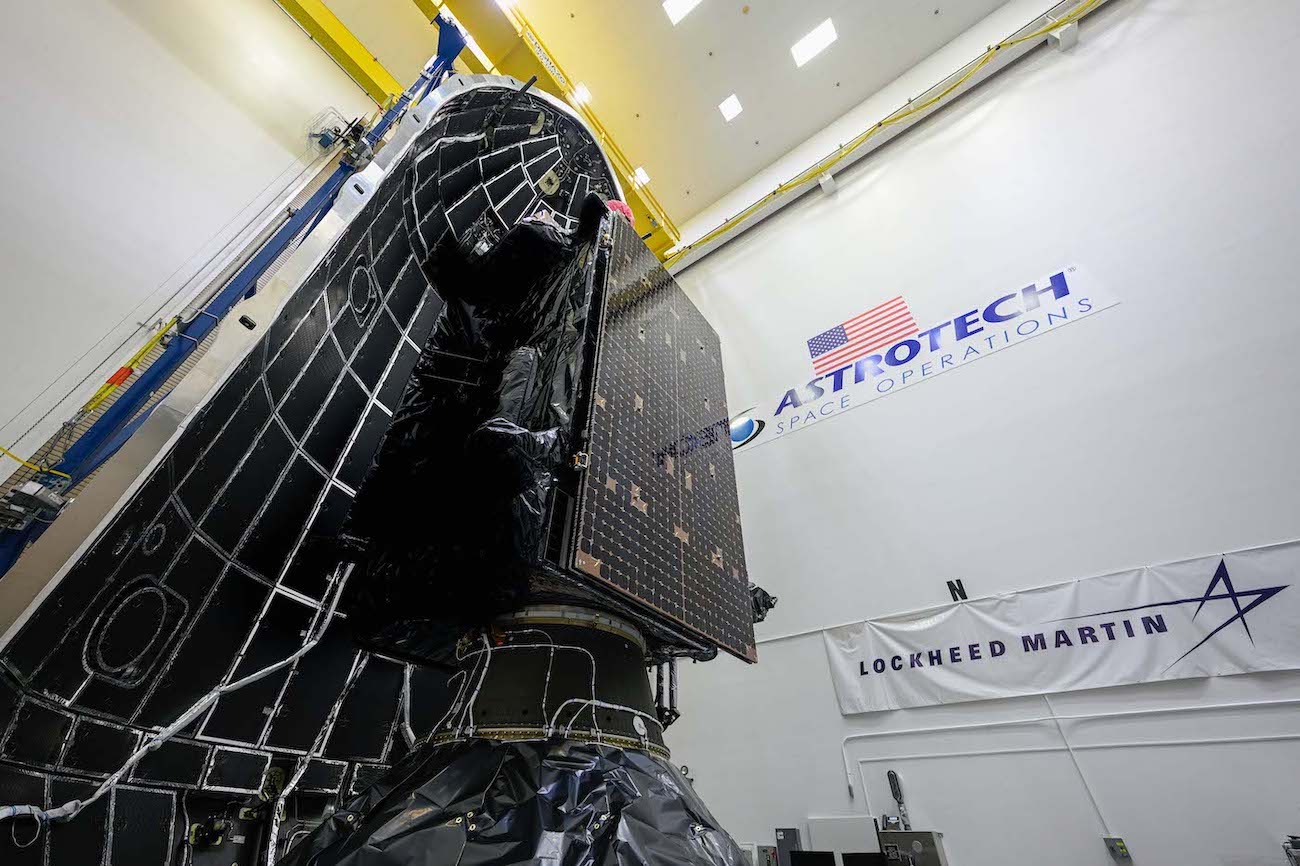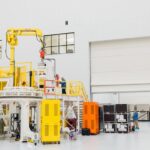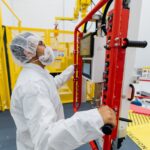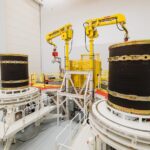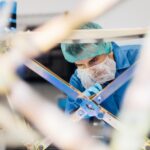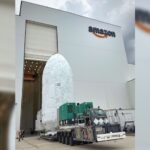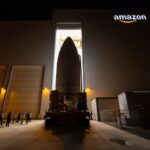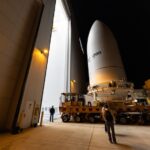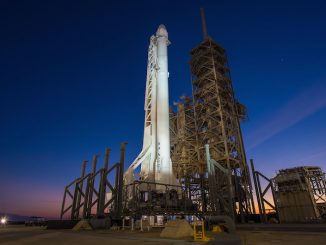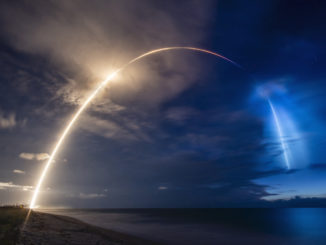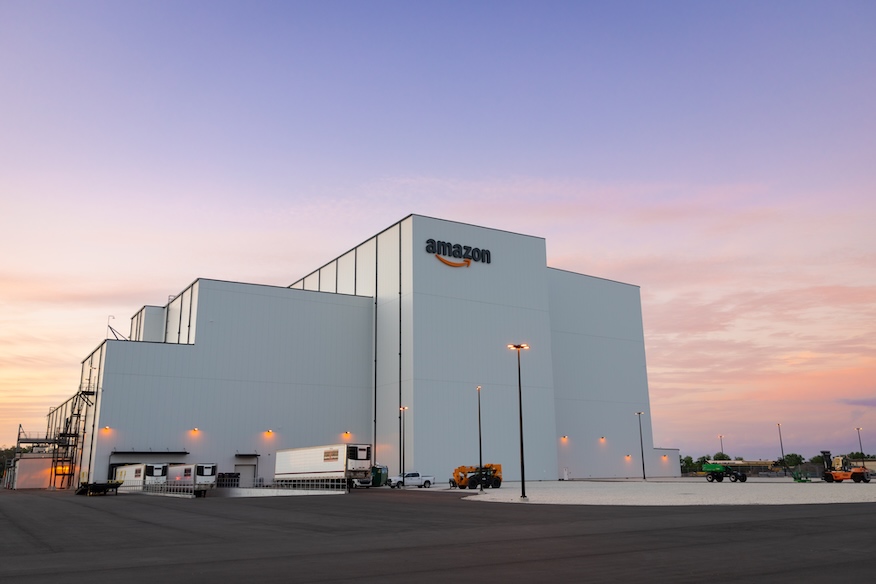
Amazon is hoping to get a good rhythm going with the launch and deployment of Project Kuiper, its 3,232-satellite internet constellation, which began operational flights in April. The tech giant said on Thursday that its nearly $140 million investment in Florida is a cornerstone to making that happen.
While shown in the background of photos and hinted at in other public relations materials during its first three launch campaigns, Amazon confirmed on July 24 that its payload processing facility (PPF) at the Kennedy Space Center (KSC) entered service back in April in time to support its first operational launch on a United Launch Alliance (ULA) Atlas 5 rocket.
“There is no better place than Florida’s Space Coast to fulfill Kuiper’s promise to bring broadband to unserved and underserved across the nation and world,” said Brian Huseman, Amazon’s vice president for public policy and community engagement, in a statement. “We are proud to make investments in Florida that will impact the local community and ultimately our customers. We look forward to our long-term partnership with Space Florida, NASA, Space Force, and state and local officials, as well as our launch providers and community partners.”
The 100,000-square-foot PPF is located along Space Florida’s Launch and Landing Facility, formerly known as the Shuttle Landing Facility. A total of 78 Space Shuttle missions wrapped up with a landing at the air strip now adjacent to the site where Amazon’s satellites are prepared and staged for launch.
Amazon purchased launches onboard more than 80 rockets, the majority of which will liftoff from either NASA’s Kennedy Space Center (KSC) or Cape Canaveral Space Force Station (CCSFS). ULA was awarded with the lion’s share of those missions. Amazon acquired launches onboard 38 Vulcan rockets and nine Atlas 5 rockets.
To date, the company used three of those Atlas flights with one of them flying a pair of demonstration satellites on the Protoflight mission back in 2023. The other full batch of operational satellites flew on a SpaceX Falcon 9 rocket, which launched on July 16.
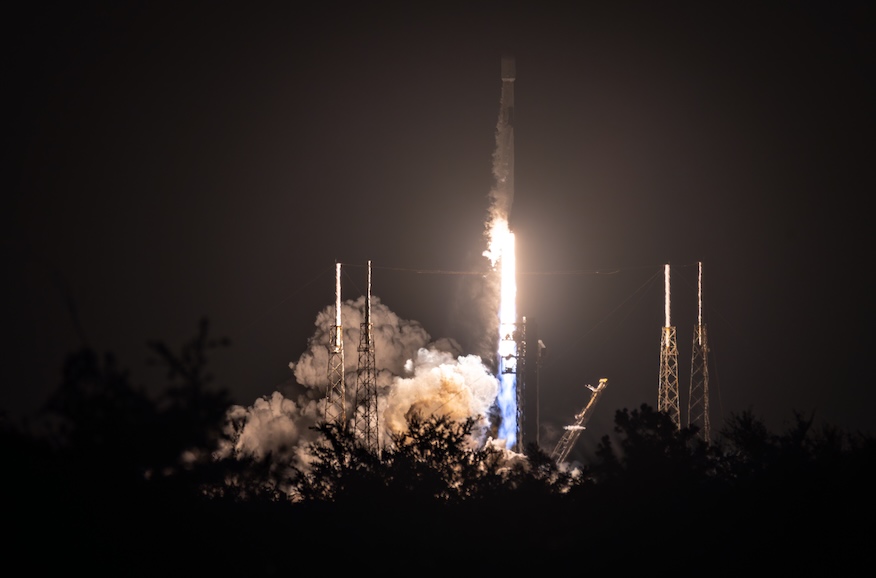
“We’ve completed three missions in less than three months, and we’re continuing to pick up the pace as we prepare to begin delivering service to customers. Our facilities and team in Florida play a critical role in that process,” said Steve Metayer, vice president of production operations at Project Kuiper. “At full capacity, this building will house three dispenser systems stacked full of Kuiper satellites, and a combination of fairings from rockets like Atlas V, Vulcan, New Glenn, and Falcon 9. There’s nothing else like it on the Space Coast.”
The original $120 million facility is also getting a $19.5 million support site, which was announced in August 2024. The 42,000-square-foot building is designed to increase Amazon’s capability to both process and store flight hardware.
It’s expected to be completed sometime this year.
“At full capacity, the new site will be able to process more than 100 satellites per month and support three simultaneous launch campaigns,” Amazon said.
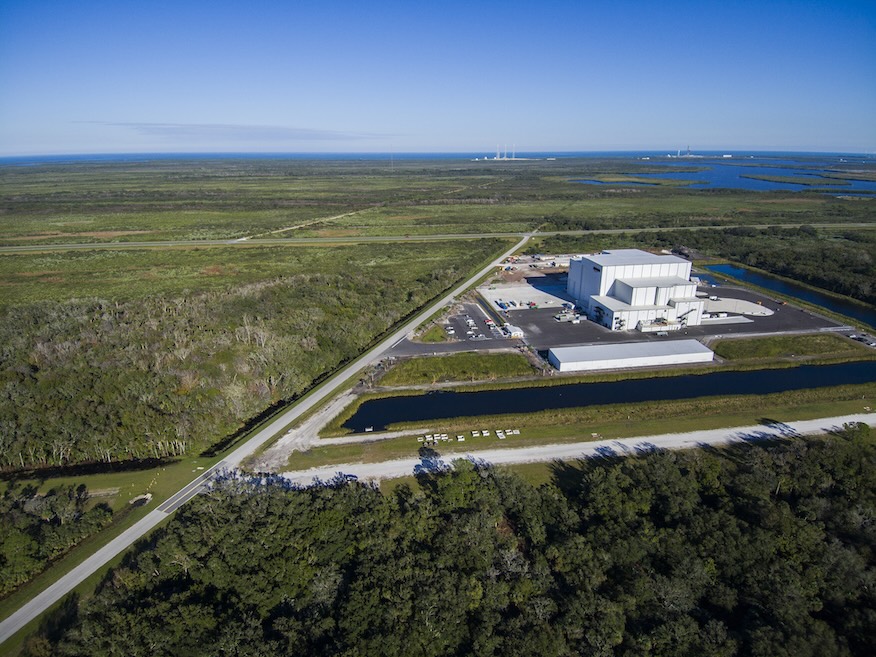
Inside the facility
Amazon manufactures its satellites in Kirkland, Washington, just across Lake Washington from Seattle. It said this facility is capable of producing up to five satellites per day “at peak,” but didn’t specifically state its current rate of production.
Once the satellites are delivered to the PPF in Florida, they are taken to the electrical checkout area to charge the batteries and determine the health of each spacecraft. After that, they head to a fueling bay where they are loaded with krypton, which powers the satellites’ Hall-effect thrusters (HET).
Krypton is used on various spacecraft, including those powered by engines from Astra, K2 Space. The Gen. 1 OneWeb satellites use BHT-350 HET engines and they were also used by SpaceX on its original Starlink satellites before switching to Argon-fueled HETs beginning with its Version 2 Mini satellites.
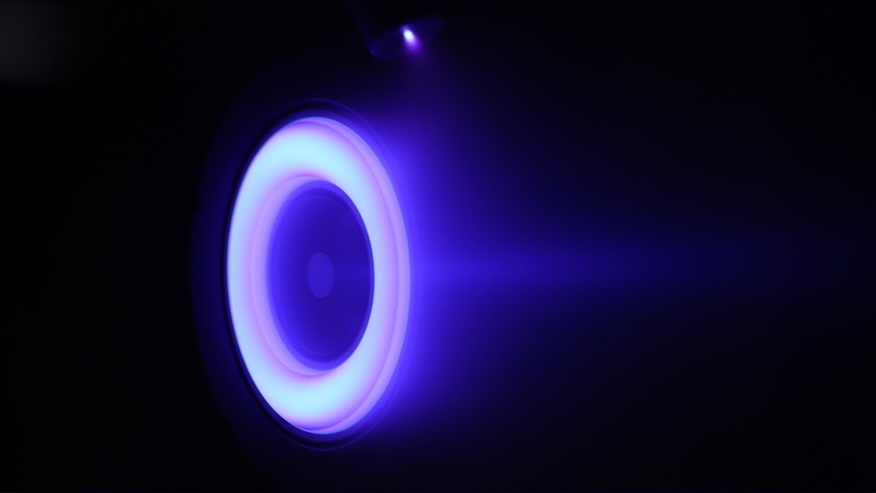
Once Amazon’s satellites are fueled, they are integrated within a multi-level dispenser system and housed in one of three encapsulation bays. Once ready for launch, the encapsulated satellites are rolled out through a 100-foot-tall (30.5 m) door and onto their launch site.
“The total number of satellites per dispenser varies based on the mission and capacity of the launch vehicle, but each mission will launch dozens of Kuiper satellites at a time,” Amazon said in a blog post.
The company said it completed integration for the next launch on its manifest, although it didn’t state when that would take place or on which rocket. The most likely prospect is Amazon’s second ride on a SpaceX Falcon 9 rocket, which could come as soon as August.
Everyone needs space
In 2024, there were 93 orbital launches between KSC and CCSFS, an increase from the 72 seen during 2023. The majority were SpaceX Starlink satellites, which it processes at its Hangar X site at KSC.
A good percentage of the remaining payloads that are processed for launch from Florida’s Space Coast go through Astrotech Space Operations, a subsidiary of Lockheed Martin, which operates in neighboring Titusville. Amazon having its own PPF means that it won’t further add to the already busy schedule at Astrotech.
During a keynote speech at the Space Mobility Conference and Expo in Orlando, Florida, in late January, Brig. Gen. Kristin Panzenhagen noted that one of the biggest bottlenecks, both at the Cape and at Vandenberg Space Force Base, was the constraint on payload processing space.
Panzenhagen, who handed over command of the Space Launch Delta 45 to Col. Brian Chatman on June 26, said in a media roundtable following her speech that the lack of payload processing space is due to a couple of reasons.
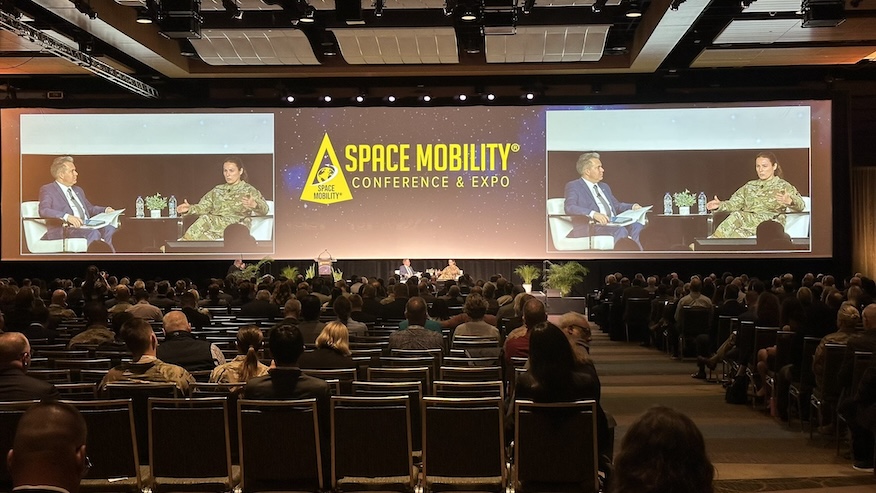
“With the launch cadence increasing, we, with our government payloads, are using the same payload processing space that the commercial payloads use,” Panzenhagen said. “That’s a decision that the Air Force made back before there was a Space Force because that’s a service that can be commercially provided. That’s usually the route we go.”
She said they also have more, multi-manifested missions where a single rocket is flying more than one payload and that can sometimes require different clean room standards and different security standards, which requires even more space.
Panzenhagen said the U.S. Space Force put out a request for proposal back to seek new commercial options and in late April, it awarded a $77.5 million commercial solutions opening (CSO) contract to Astrotech to expand its space vehicle processing footprint at Vandenberg, specifically for National Security Space Launch (NSSL) contracted missions by 2028.
A solution hasn’t been fully fleshed out for the Cape, but Panzenhagen said she and others had “a lot of conversations with the members and the staffers” on Capitol Hill about the need for more pre-launch processing capacity.
“We have gotten a good acknowledgement that they understand the need for it. So, we’re cautiously optimistic that we’ll get some funding in ’25,” Panzenhagen said. “TBD what amount of funding we’ll get, but we have postured ourselves, I think, on the Eastern Range that we could accept and make good use of varying amounts of funding.
“A smaller amount of funding might not close the whole gap, but it’ll at least start addressing the bottleneck.”
